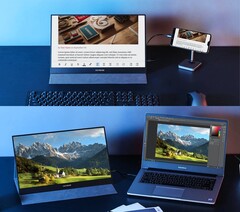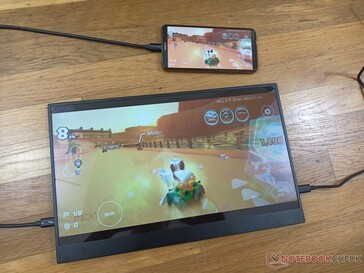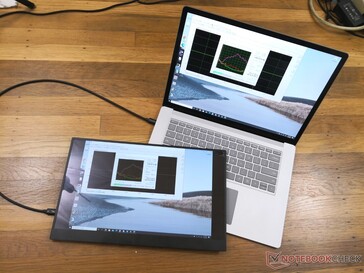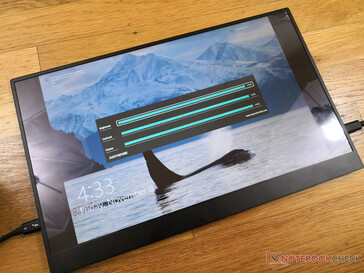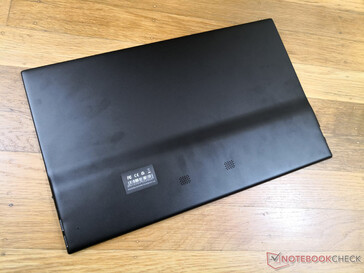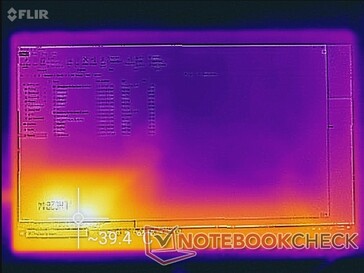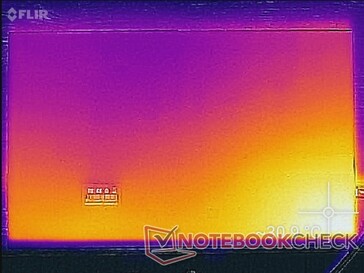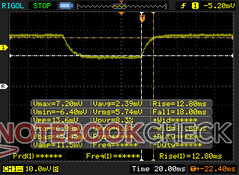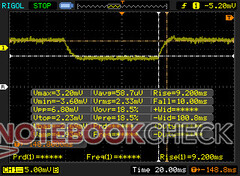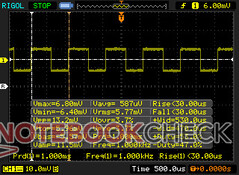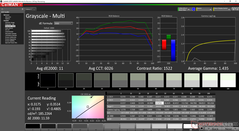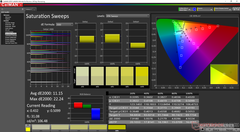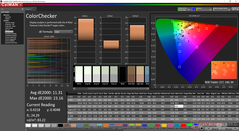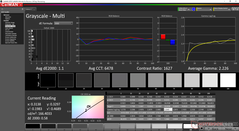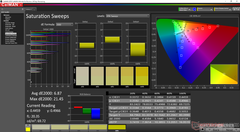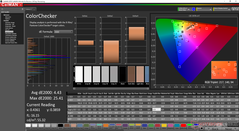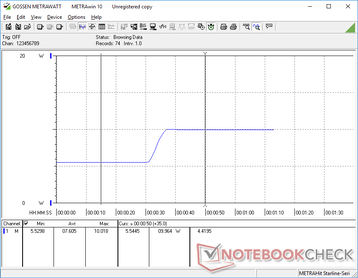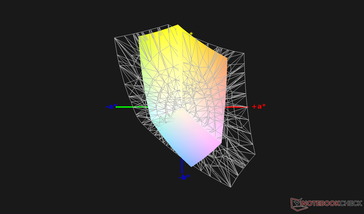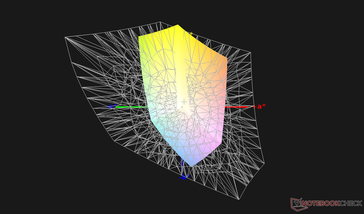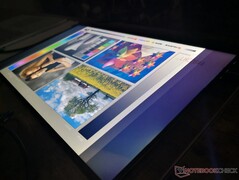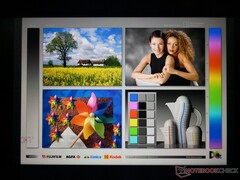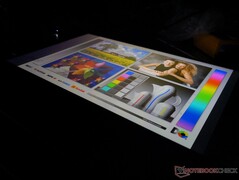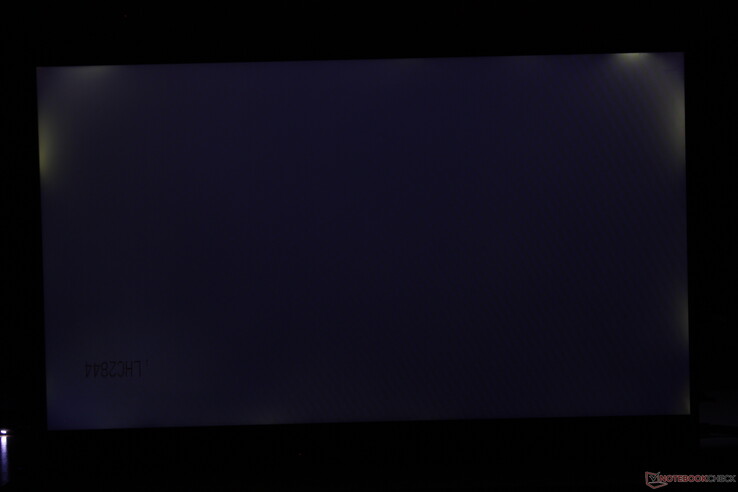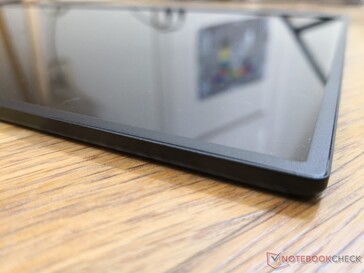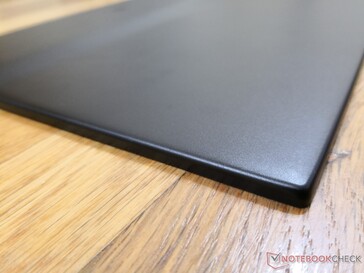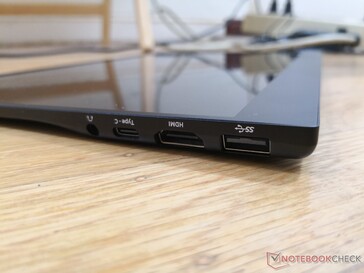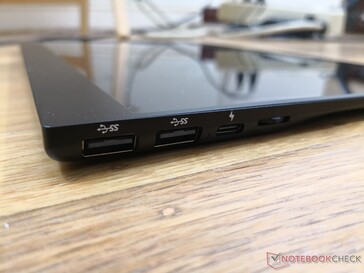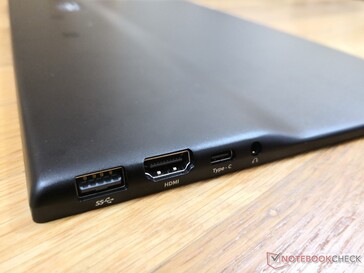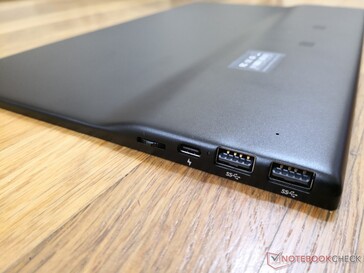The Anyware PhonePad is a 15.6-inch portable touchscreen monitor designed to be an on-the-go secondary display for your laptop PC or Android smartphone. The manufacturer has sent us a pre-production unit to test and try out for ourselves. More details on the monitor can be found on its official Kickstarter page here. Our overall impressions of the device, however, are mixed.
Advertised specifications:
| Mode name | PP15MTFHD-B |
|---|---|
| Display | 15.6-inch IPS 60 Hz, 10-point touchscreen |
| Native Resolution | 1920 x 1080, glossy (no glass) |
| Brightness | 250 nits |
| Contrast Ratio | 800:1 |
| Speakers | Stereo (1 W x2) |
| Gamut | 45 percent NTSC |
| Power Consumption | <13.5 W, (15 W AC adapter included) |
| Ports | 3x USB-A, full-size HDMI, USB-C (power), USB-C (data and power) |
| Dimensions, Weight | 352 x 218 x 4.7 - 10.2 mm, 800 g |
First, let's talk about what the PhonePad gets right. Build quality is better than expected for a portable display with such narrow bezels and no Gorilla Glass protection. The chassis is aluminum instead of the plastic we usually see like on the Lepow or AirTab. Attempting to bend the monitor results in much less flexing and creaking than the aforementioned plastic alternatives.
The second thing we like about the PhonePad is its wide variety of integrated ports. Users have three full-size USB-A ports, two USB-C ports, full-size HDMI, and a 3.5 mm headphone-out jack. Many portable monitors like the 15.6-inch Asus ZenScreen are limited to just USB-C ports with no HDMI options at all.
Unfortunately, the list of disadvantages is hard to ignore. Though the TPV ELECTRONICS VS230PGLW IPS panel in use here offers crisp images with good viewing angles, brightness and colors are both poor. Glare is inevitable especially if using the PhonePad outdoors while the narrow color space of just 57 percent of sRGB is unfit for graphics editing. Even subjectively, colors are not vivid and they don't pop like on an iPad or Samsung Galaxy Tab.
The display also suffers from pulse-width modulation at all brightness levels up to 99 percent and the average black-white response times result in noticeable ghosting when playing fast-paced first-person shooters. If your eyes aren't sensitive to screen flicker and if you mostly play slower-paced games like DOTA 2 or mobile games, however, then these specific drawbacks shouldn't be a problem.
Colors and grayscale are poorly calibrated out of the box as well. Color temperature is much too warm and color accuracy consequently suffers. Calibrating the display ourselves would bring down the average grayscale deltaE value significantly from 11 to just 1.1, but colors remain inaccurate due to the limited gamut.
| Anyware PhonePad PP15MTFHD-B 15.6", 1920x1080 | Lepow Type-C Portable Monitor X0025I0D4P 15.6", 1920x1080 | C-Force CF011S RTK2A3B, , 15.6", 1920x1080 | AirTab Portable Monitor 15.6-inch 15.6", 1920x1080 | Auzai ME16Z01 Portable Monitor 15.6", 1920x1080 | |
|---|---|---|---|---|---|
| Display | |||||
| Display P3 Coverage (%) | 40.16 | 41.31 | 41.08 | 40.72 | 48.53 |
| sRGB Coverage (%) | 58.3 | 62.1 | 60.3 | 61 | 72 |
| AdobeRGB 1998 Coverage (%) | 41.49 | 42.71 | 42.44 | 42.11 | 50.2 |
| Response Times | |||||
| Response Time Grey 50% / Grey 80% * (ms) | 19.2 ? | 30.8 ? | 41.2 ? | 36 ? | 38.8 ? |
| Response Time Black / White * (ms) | 30.8 ? | 23.6 ? | 40.8 ? | 31.2 ? | 25.2 ? |
| PWM Frequency (Hz) | 1000 ? | 1000 ? | 1000 ? | 1042 ? | 201.6 ? |
| Screen | |||||
| Brightness middle (cd/m²) | 185.7 | 193.9 | 205 | 206.5 | 300.7 |
| Brightness (cd/m²) | 175 | 192 | 193 | 198 | 267 |
| Brightness Distribution (%) | 62 | 88 | 88 | 88 | 77 |
| Black Level * (cd/m²) | 0.19 | 0.75 | 0.25 | 0.33 | 0.66 |
| Contrast (:1) | 977 | 259 | 820 | 626 | 456 |
| Colorchecker dE 2000 * | 11.31 | 6.66 | 8.01 | 4.25 | 10.26 |
| Colorchecker dE 2000 max. * | 23.16 | 18.75 | 19.93 | 18.11 | 22.93 |
| Colorchecker dE 2000 calibrated * | 4.43 | 3.83 | 4.3 | 4.08 | 5.05 |
| Greyscale dE 2000 * | 11 | 7.6 | 8.3 | 3.1 | 9.5 |
| Gamma | 1.44 153% | 2.04 108% | 2.1 105% | 2.31 95% | 1.51 146% |
| CCT | 6026 108% | 8567 76% | 6106 106% | 6994 93% | 8200 79% |
| Color Space (Percent of AdobeRGB 1998) (%) | 37.5 | 39.3 | 38.7 | 38.7 | 45.8 |
| Color Space (Percent of sRGB) (%) | 57.7 | 61.8 | 59.8 | 60.8 | 71.5 |
| Total Average (Program / Settings) |
* ... smaller is better
Overall, the Anyware PhonePad is an average IPS touchscreen wrapped in a relatively strong metal chassis with lots of port options. It could have absolutely benefited from a brighter display for improved outdoor visibility and a deeper OSD for more fine-tuning. Users will have to install the smartphone app in order to access more detailed OSD settings. The manufacturer is planning to launch the PhonePad for $350 USD sometime this month which we think is a lot for a portable monitor with an unimpressive display.


